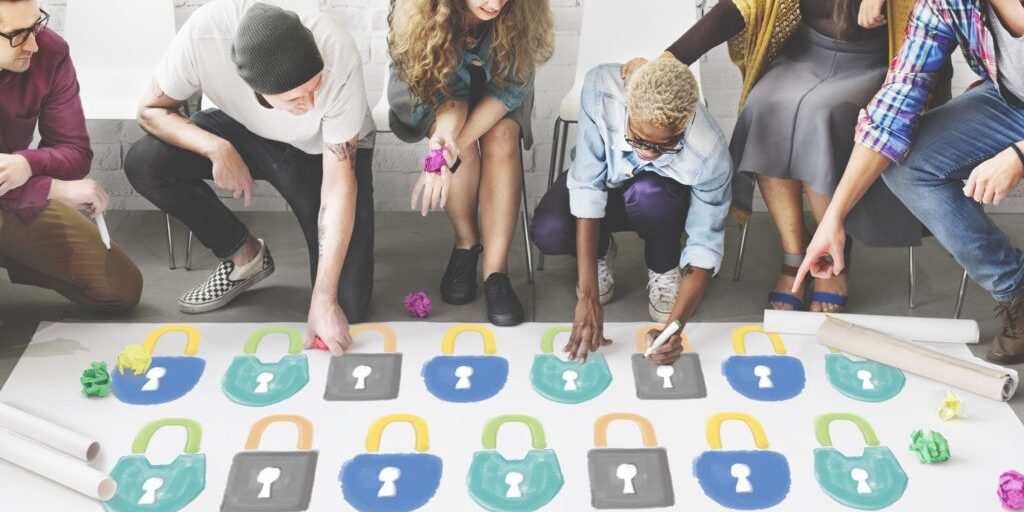
How to Build Cybersecurity Culture in your Organization
The cybersecurity landscape has evolved drastically over the last few years. Cybercrime has become more sophisticated, common, devastating, and successful, as is evident in the ITRC 2021 Data Breach Report. The ever-growing cyber threats, coupled with the strict enforcement of data privacy and protection regulations, have led many organizations to rethink their cybersecurity strategies.
A cyber incident doesn’t just affect the IT department but the organization as a whole. So, an organization-wide approach is needed to combat harmful cyberattacks, IT outages, data breaches, and exposures. In other words, cybersecurity should be embedded deep in an organization’s culture. Employees can face downtime. Phishing attacks could succeed where simple training could have prevented it. Ransomware could hit the bottom line.
Organizational culture refers to how individuals, departments, and other entities collectively behave within an organization. Culture is established through shared beliefs and values that shape the perceptions, conduct, behavior, and understanding of those making up the organization’s ecosystem — employees, management, affiliates, shareholders, etc.
What is cybersecurity culture, and why is it important?
What does cybersecurity have to do with organizational culture? To most people, cybersecurity means antimalware, compliance, access control, network security — all those software and hardware defenses. But these only represent the physical part of a cybersecurity system. One intangible aspect of cybersecurity is arguably more important than the physical framework itself.
A cybersecurity culture means having the right knowledge, attitude, and mindset toward cybersecurity. An organization’s leadership is responsible for shaping the organization’s goals, policies, social norms, and responsibilities. Ultimately, this ensures that security consciousness and accountability among all employees align with the organization’s values.
A well-established cybersecurity culture strengthens an organization’s security posture from within, turning the workforce, the weakest cybersecurity link, into a vital security asset. Good training and good culture backed by solid solutions and policy are excellent deterrents against cybersecurity breaches. Afterwards, arming your employees with the right solutions for maintain a strong cybersecurity posture will be significantly more effective.
How to create a cybersecurity culture
Developing a strong cybersecurity culture is a long-term endeavor. But, it’s not as straightforward as simply dictating rules or installing cyber defenses. Instead, you must weave cybersecurity consciousness into the organization’s processes, procedures, governance, and social setting. Here are five tips for laying a solid foundation to cultivate a security-conscious culture:
1. Get everyone on board
The first step to building a cybersecurity culture is rallying everyone behind a shared vision. Therefore, your cybersecurity posture is only as strong as its weakest link. All it takes is one weak password by one end user. Therefore, IT admins must ensure that the security culture encompasses everyone in the organization, from top officials to ground-level employees. Also, don’t forget to include third-party affiliates, partners, and associates too.
2. Set clear goals, roles, and expectations
It’s important to understand where you’re coming from and what you hope to achieve. Begin by analyzing the relationship between your current organizational culture and cybersecurity. Does it align with the organization’s security objectives? What are the loopholes and hindrances to achieving those goals? Then, assign security roles and set clear expectations and plans to develop a clear roadmap for change. Maybe you want to minimize certain risks, achieve compliance, or reach a certain level of security preparedness. But always aim high.
3. Invest heavily in cybersecurity awareness
Cybersecurity awareness is the key to a security-conscious culture. A majority of data breaches occur due to human error and can easily be avoided with cybersecurity training. Unfortunately, most employees can’t recognize threats, actions, or mistakes that can potentially jeopardize their company’s cybersecurity. In a study by TalentLMS, 60 percent of employees, some of whom had taken cybersecurity training courses, failed a basic cybersecurity test. Such figures really put this problem and its effects into perspective. Therefore, something must be done about this glaring weak point in the cybersecurity armor.
4. Get the right tools and expertise
Information alone is not enough to defend against cyber threats. Training and policy in cybersecurity can only go so far. Therefore, equip your employees with the necessary tools to detect, counter, and report imminent threats. You could even augment your staff with a security-focused managed service provider to catch even the most sophisticated threats.
5. Keep score
You must constantly nurture the security culture to keep it alive. Make regular checks to see that all the set guidelines and policies are followed, security tools are used correctly, and security efforts are headed in the right direction. You can make a sport of this by organizing random drill tests and employee evaluations to keep everyone on their toes. Doing so also creates opportunities to incentivize and motivate security preparedness among employees through rewards and recognition. Cyber threats are always evolving.
![]()
Wrapping up
The main point of establishing a cybersecurity culture is to instill security responsibility in employees and empower them to support cybersecurity. Therefore, this essentially turns the HR community into the company’s security advocate.
Speaking of security empowerment at the individual level, GateKeeper has just the solution for that. It’s a proximity-based password manager that works with any device or platform. Therefore, users won’t have to worry about authenticating at every step, yet maintain a strong cybersecurity posture. Most importantly, IT admins can effectively manage users, computers, accounts, and passwords from one central location. Equip your workforce with our robust user authentication system featuring continuous MFA, proximity login, automatic device lock, and more. Contact us to get started.
See GateKeeper Enterprise advanced MFA in action.
Take a self-guided tour of how you can evolve from passwords. Then you're really saving time with automation.




